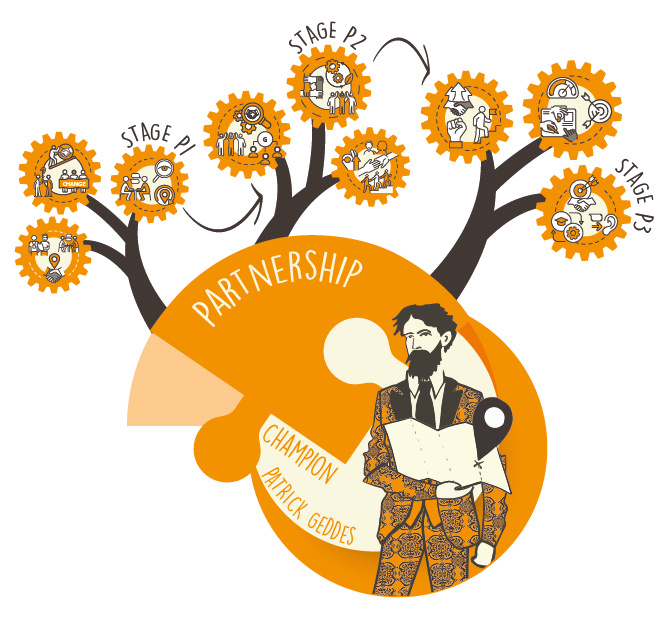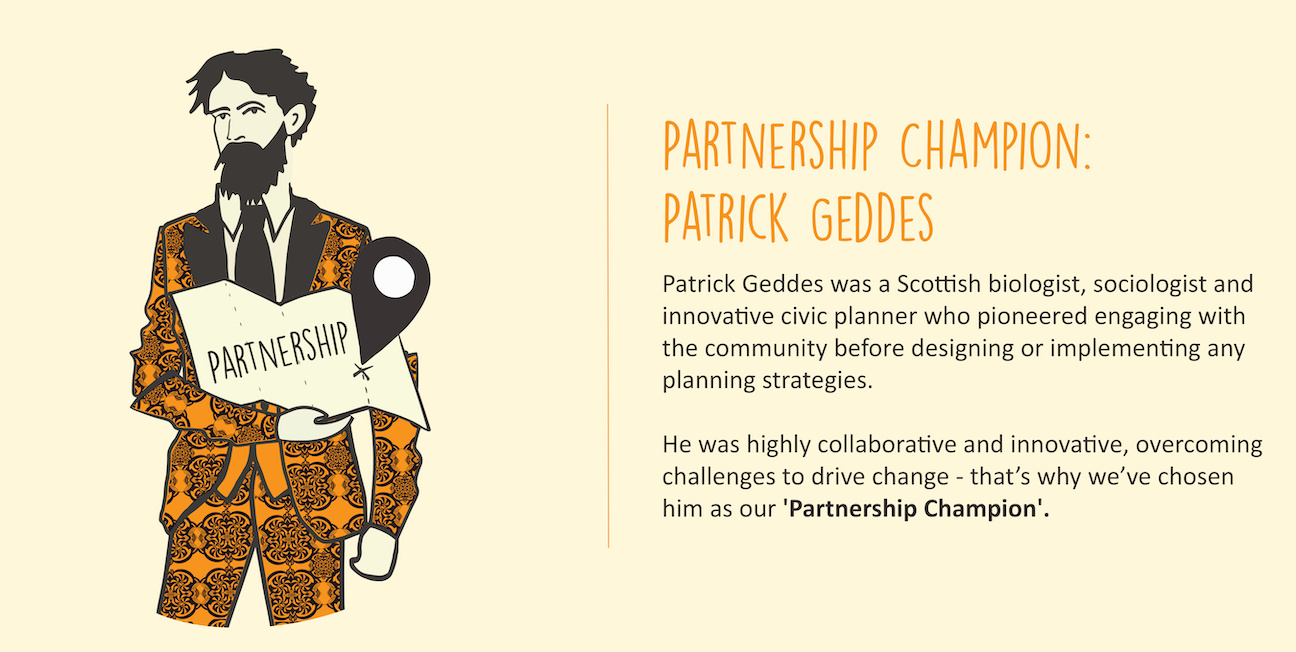Working in partnership should enable you to achieve much more together than you can
achieve alone.
Your commitment to developing a strong, healthy and dynamic partnership should result
in progressive, impactful and transformative actions that achieve clear benefits.
Targets and monitoring and evaluation should be included in the action planning
process.
Co-design actions - Actions should be co-designed with
stakeholders and should build on earlier work to set intentions, develop the
evidence base, map out the changes that the partnership is working towards, identify
levers of change and develop resourcing options. Securing commitment and investment
will require consensus building, influencing and work to develop the business case
for individual and collective actions.
Examples of adaptation action categories:
Adaptation actions should be developed based on the unique culture, context, and
risks faced by different places. As the partnership works towards transformational
change, it is likely to develop a range of actions which include incremental actions
as well as actions that seek to alter existing systems and ways of doing things. A
portfolio of activities that span multiple scales and systems can collectively
contribute towards addressing the root causes of climate risks and influence
transformation. This is likely to be a messy process because influencing system
change is complex, non-linear process.
The scope of adaptation actions adaptation partnerships commit to will develop over
time as partners build trust and gain skills and experience.
Whilst there are no ‘off the shelf’ adaptation actions the table below provides
examples of different categories of actions.
| Action category |
Examples |
| Physical interventions |
Engineered solutions - for example flood defences, building retrofits or
engineered solutions to reduce landslide risk
Nature based solutions - for example sustainable urban drainage, blue
green, infrastructure, protection of coastal ecosystems such as sand
dunes, and tree planting to reduce flood risk, improve biodiversity and/
or improve land stability.
|
| Policy and risk disclosure |
Embedding adaptation into local policy making - for example in planning,
economic, transport, housing, and net zero policies and plans
Working with the private sector - for example engaging with companies
that must disclose climate risks as a result of economy wide climate
risk disclosures and involving them in local action to adapt.
|
| People |
Addressing imbalances in power and decision making - for example by
committing to involving under- represented and vulnerable groups or
communities in governance and decision making.
Recognising the importance of culture and creative practice in
transformational change - for example involving artists and creative
practitioners in developing and implementing adaptation actions.
Creating space to address shared challenges - for example local
authorities committing to sharing expertise and taking join action to
adapt.
|
| Finance |
Developing a pipeline of investment ready projects
Identifying public and blended finance options for projects
Working with insurers
|
| Tools and resources |
Early warning systems and improved local emergency and resilience
plans
Climate resilient design principles and guidelines
New and emerging technology - for example remote sensing to track climate
impacts and risk, interactive community mapping to record stories and
local evidence of climate impacts
|
| Knowledge |
Independent advice and scrutiny - Bring in people who can help improve
your ideas and approaches and support transparent monitoring and
evaluation
|
The table above Includes content drawn from Table 1 Categories of beneficial
adaptation actions for the next five years for the UK, Independent Assessment of
UK Climate Risk Advice to Government For the UK’s third Climate Change Risk
Assessment (CCRA3) and Climate Ready Clyde Adaptation Strategy, section 3.2
flagship actions.
Monitoring and evaluation - Effective
monitoring and evaluation is an essential part of the adaptation process. It should
include:
-
The process of adaptation - to the activities and decisions being taken for
adaptation. Is implementation and action occurring?
-
The outcomes of adaptation - the condition of adapting. Have the intended
adaptation objectives been achieved?
Agreeing targets, outcomes, indicators and monitoring and evaluation processes should
be integral to the process of identifying and agreeing adaptation actions.
Resources
The CO-designing the Assessment of Climate CHange costs project have developed
useful guidelines for best practice on co-design. Find out more about the COACCH
project here:
https://www.coacch.eu/
Examples of adaptation actions for different places include:



